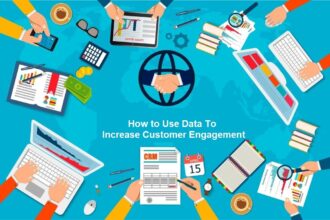Broadband Internet service has improved considerably since the first cable modems were introduced back in the mid 1990s. With optical fiber installations being rolled out across the nation, cable modem manufacturers are eagerly awaiting new specifications and new hardware to help them compete. Gigabit network speeds (roughly one thousand megabits per second) are expected to be the norm when these new technologies are introduced. This is going to make it difficult for many companies and individuals to avoid going over their data caps.
Broadband Internet service has improved considerably since the first cable modems were introduced back in the mid 1990s. With optical fiber installations being rolled out across the nation, cable modem manufacturers are eagerly awaiting new specifications and new hardware to help them compete. Gigabit network speeds (roughly one thousand megabits per second) are expected to be the norm when these new technologies are introduced. This is going to make it difficult for many companies and individuals to avoid going over their data caps.
What is a Data Cap?
Every byte of information that is transmitted to or from a particular IP address can be tracked and tallied by the ISP (Internet Service Provider). A data cap either throttles (slows down) or stops service if the number of bytes exceeds a certain limit. Most residential Internet connections never get anywhere near their limit, but this could change.
New Services, New Opportunities
Chief among any set of new services made available by faster network speeds is enhanced streaming video. Cable television has always had the capacity to make high quality video available to its customers, but the new services will make it possible for ultra-high-resolution signals like 4K (4000-pixel horizontal resolution or greater) television possible on a packet network like the Internet. While this might seem like just an upgrade of an existing service, the reality is a data-network video signal can do things a standard cable-transmitted television signal can’t. For example, a data-network signal can integrate social media on the same screen with almost no additional infrastructure. To do the same on a cable transmission would require an enormous amount of effort, none of which would guarantee the service would match what the Internet already provides.
The Data Problem
A 4k television signal can be compressed, but even with the most efficient software and hardware now available the signal still requires up to 15 Mbps of bandwidth. If a residential account has a 250 GB cap, this means they will get roughly 35-40 hours of television before their data cap is exhausted. It gets even worse if there are two televisions watching two different shows, or if the network connection is being used for other services or Internet access.
This presents a major problem, because without the ability to fully utilize their connection or their expensive 4k hardware, individuals are not going to be eager to spend heavily on a gigabit-quality network connection or the hardware required to make it work.
How to Avoid the Cap
First and foremost, businesses and individuals need a precise way to measure their network usage. Whether it is provided by the ISP or made possible through the use of a local application or inside-the-network server, monitoring and analyzing network usage is crucial.
Secondly, making everyone who uses the network aware of what kinds of data are likeliest to cause a usage spike is vitally important. Turning on a video stream (or three) and just leaving it running is not going to help keep costs down.
Third, and probably most important, anyone using the network should be made aware of the recommended alternatives to running the biggest, fastest and highest-consumption applications and services on the network (some form of company training will be needed here, nothing too heavy but a training and delivery method must be in place to minimize confusion). Chances are a simple HD signal, for example, is more than enough video fidelity for the average viewer. Watching CNN in 4k might be amusing, but it’s likely too expensive to turn into a habit.
Solutions?
Contrary to popular opinion, data is not scarce, nor is the hardware required to get it from one place to the next. With technologies like DOCSIS 3.1 and fiber-optic cabling, not only are network speeds exceeding 1 Gbps possible, but they should be expected. The reality of the situation is that there are no technology-based reasons why everyone can’t have all the data they need. Ultimately, it boils down to how big the pipe is and how many people need to use it. Granted, not everyone is going to be watching 4k TV 24 hours a day, but there’s nothing stopping an ISP from making that possible either.









